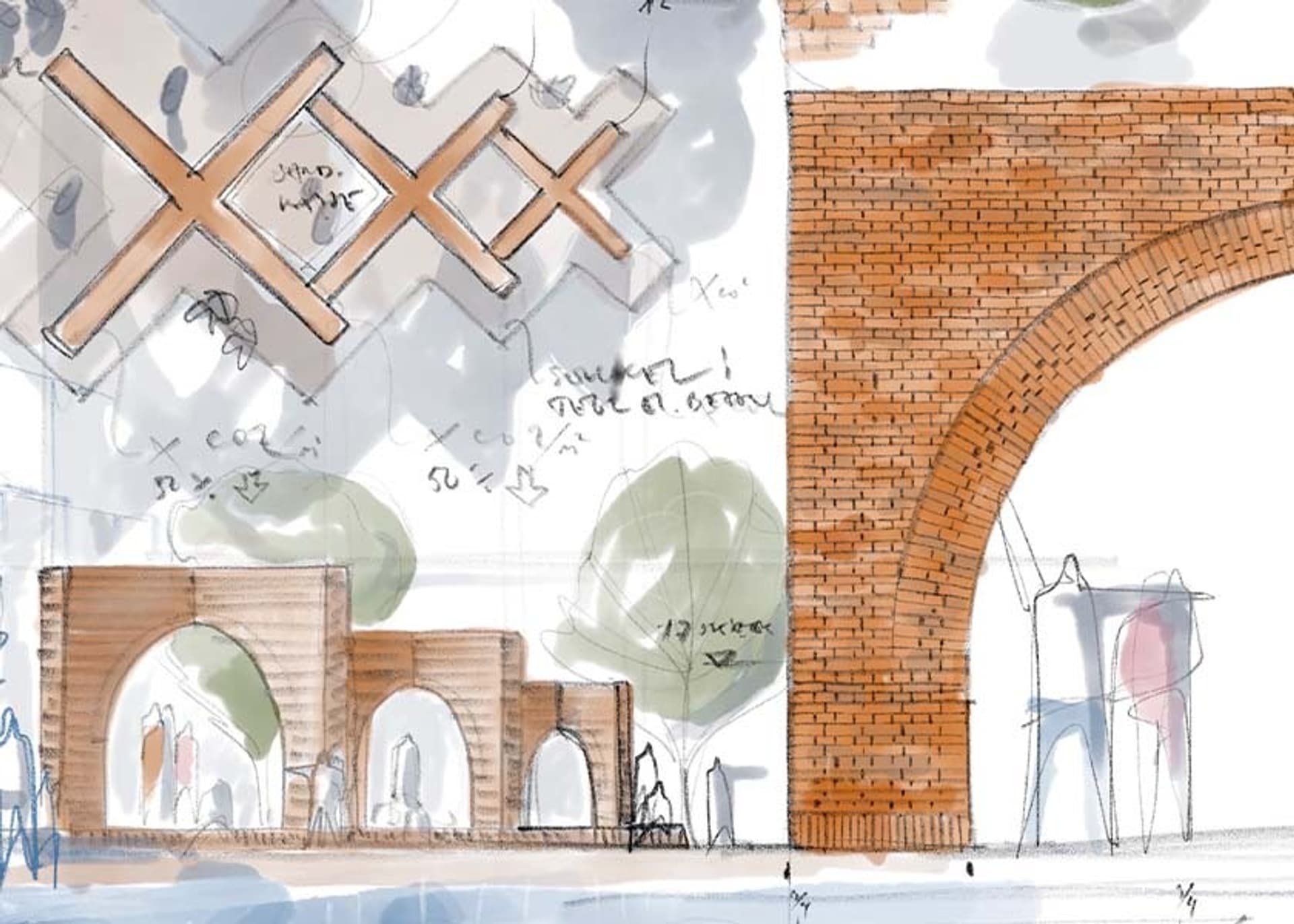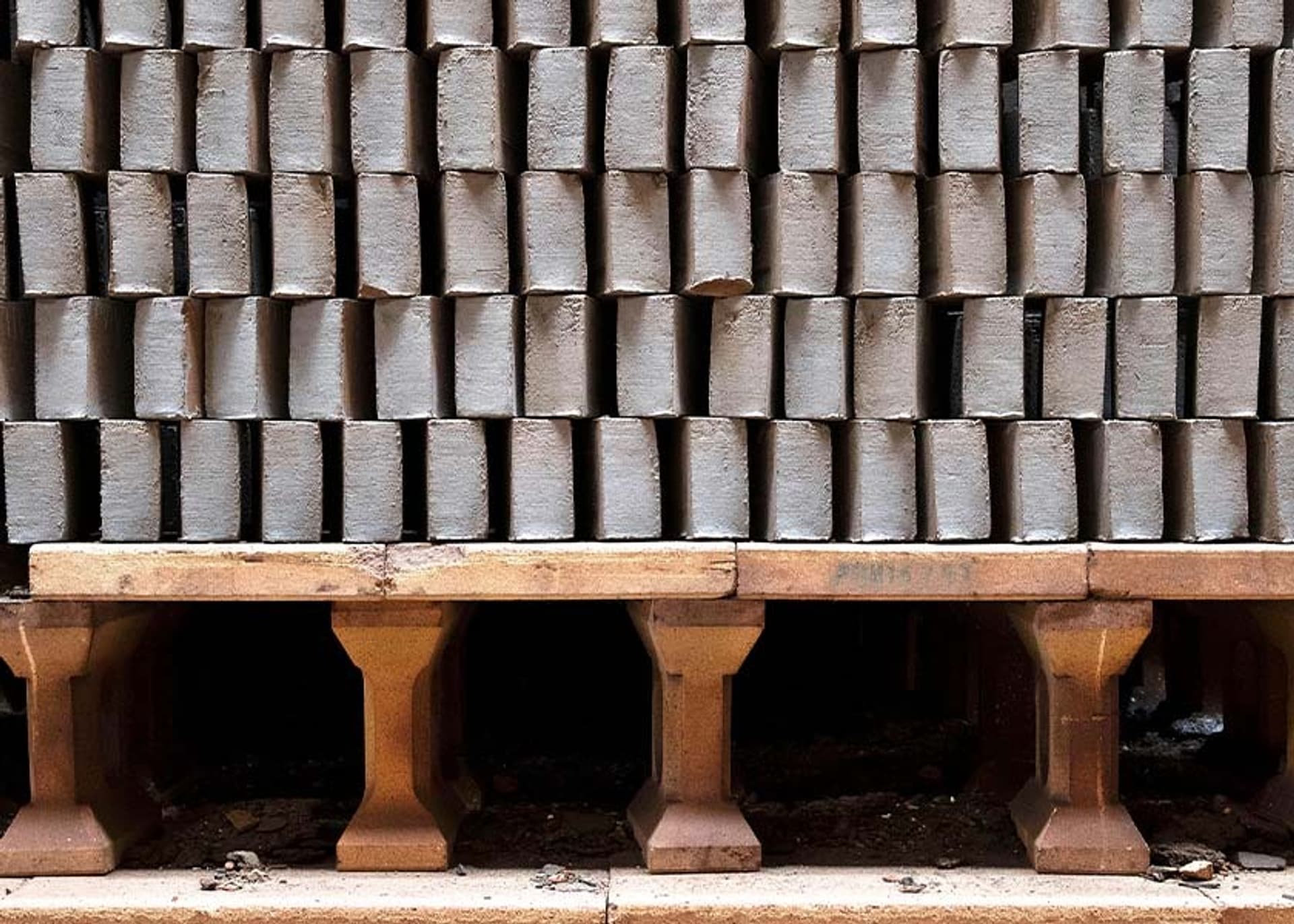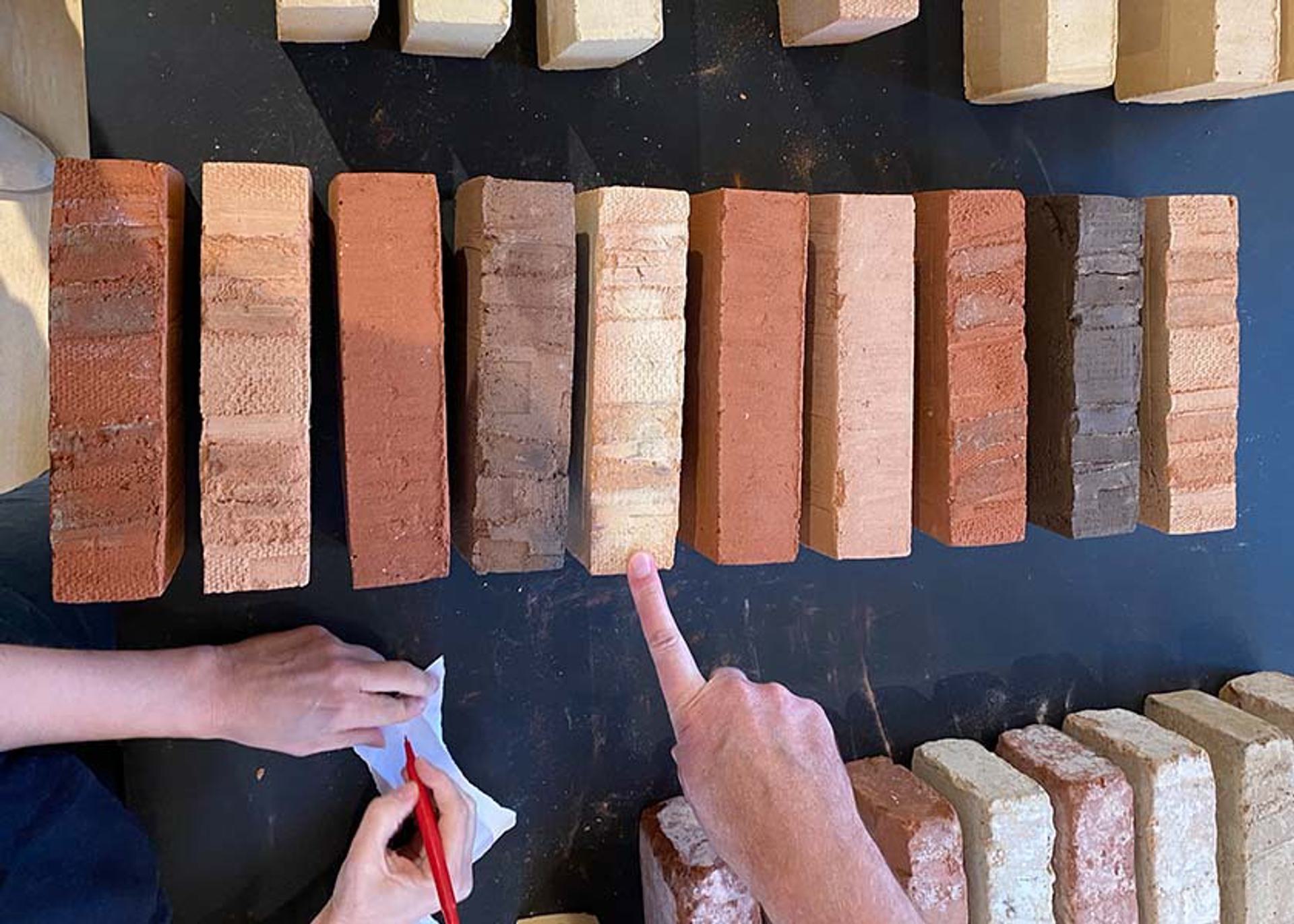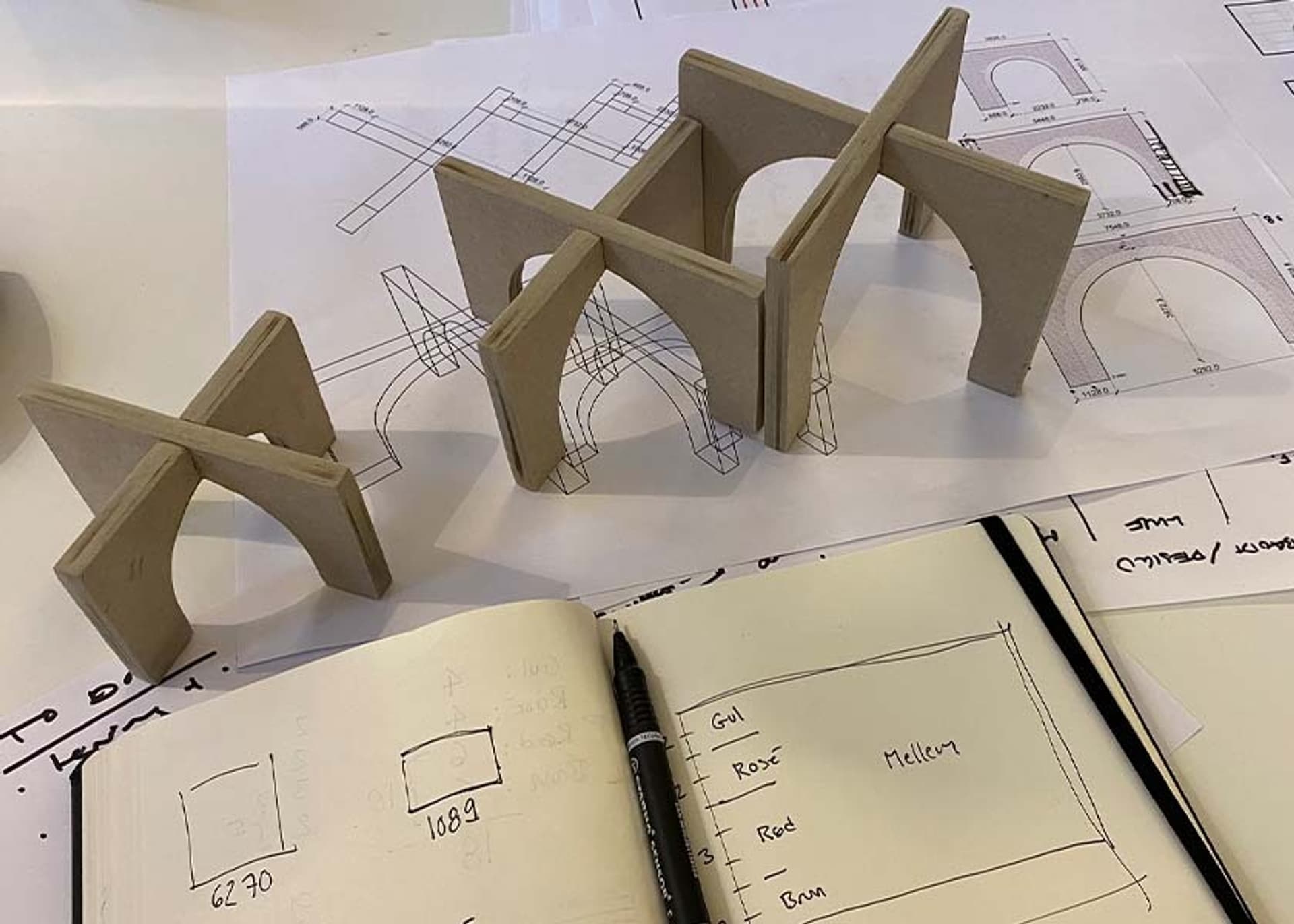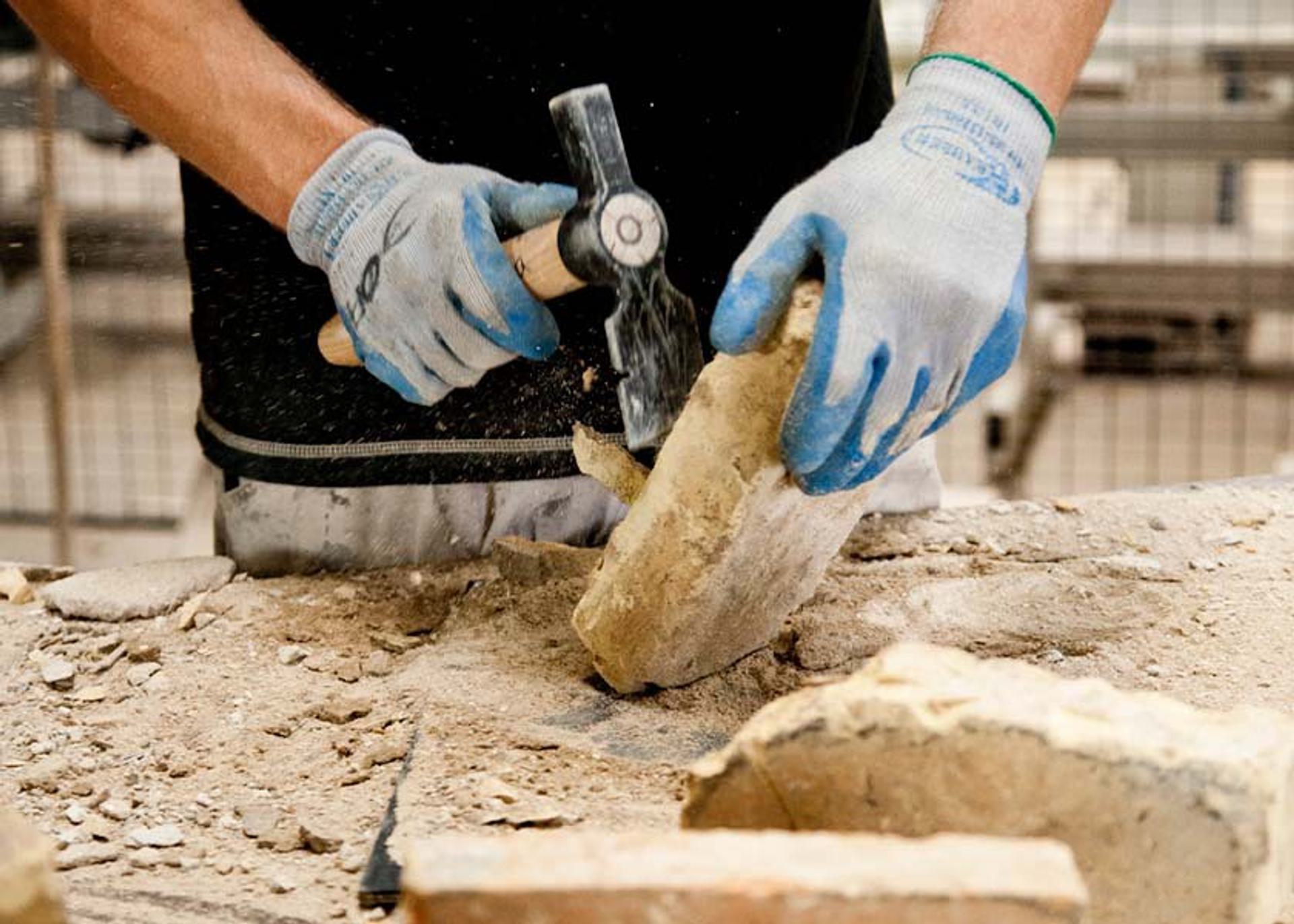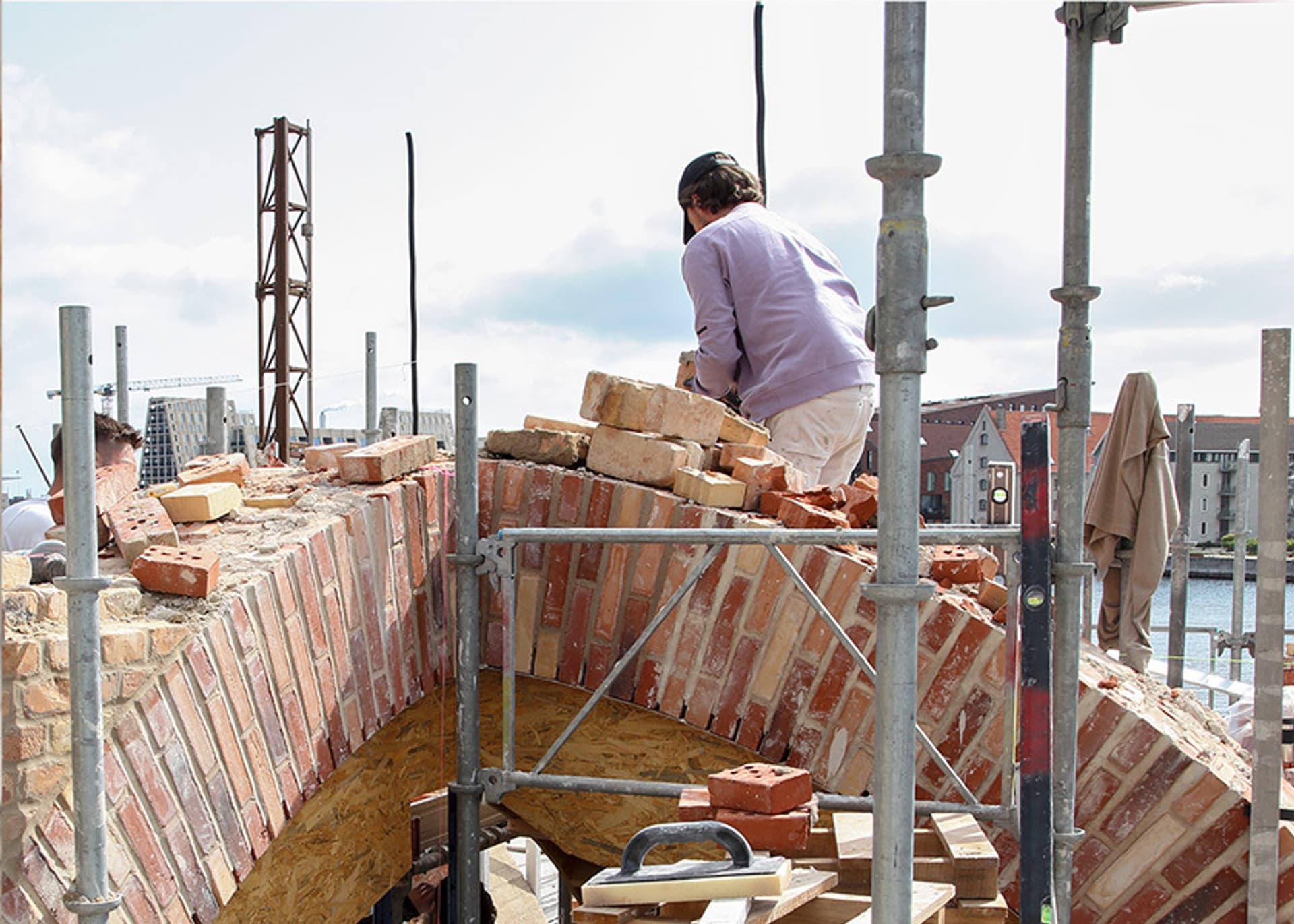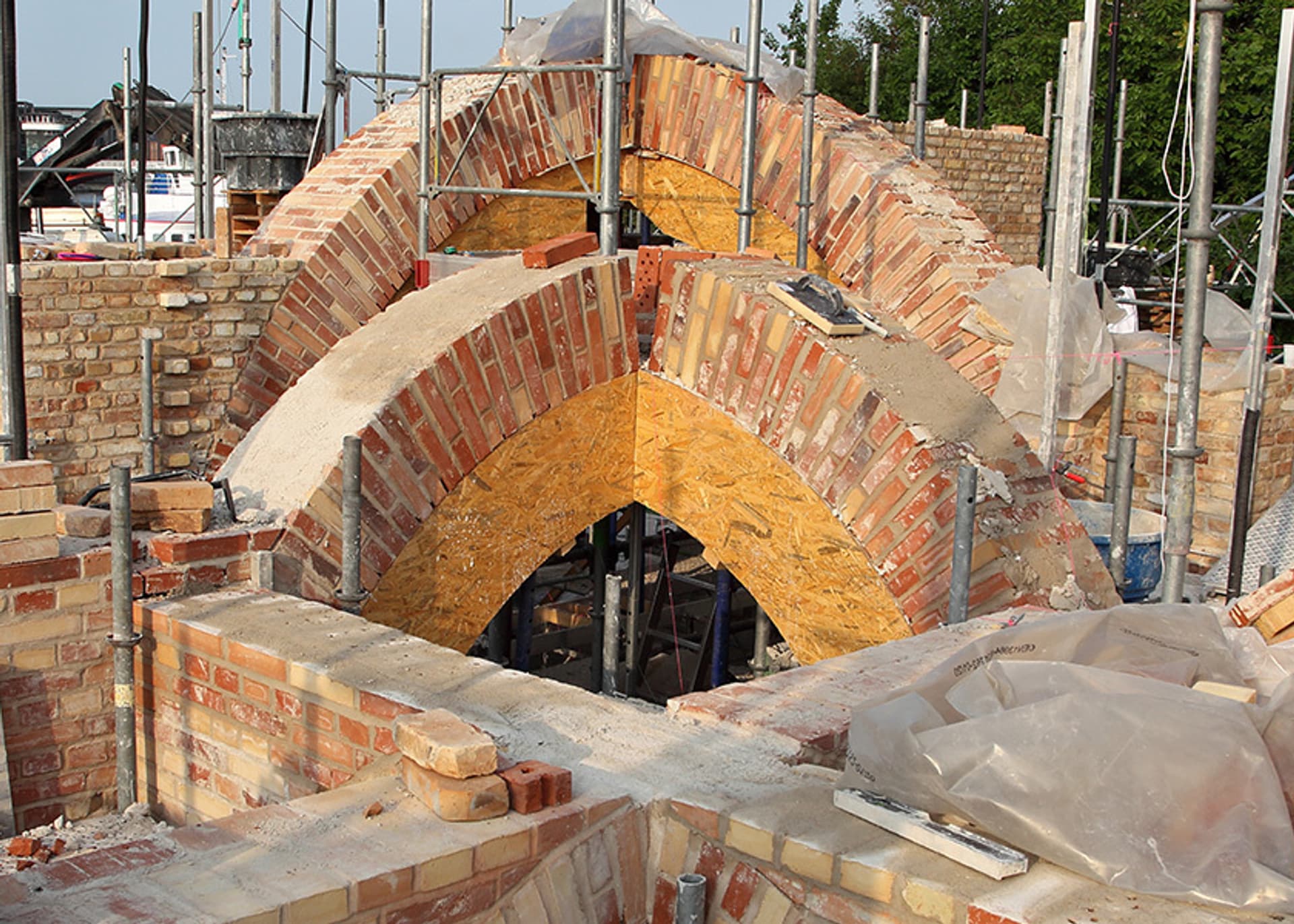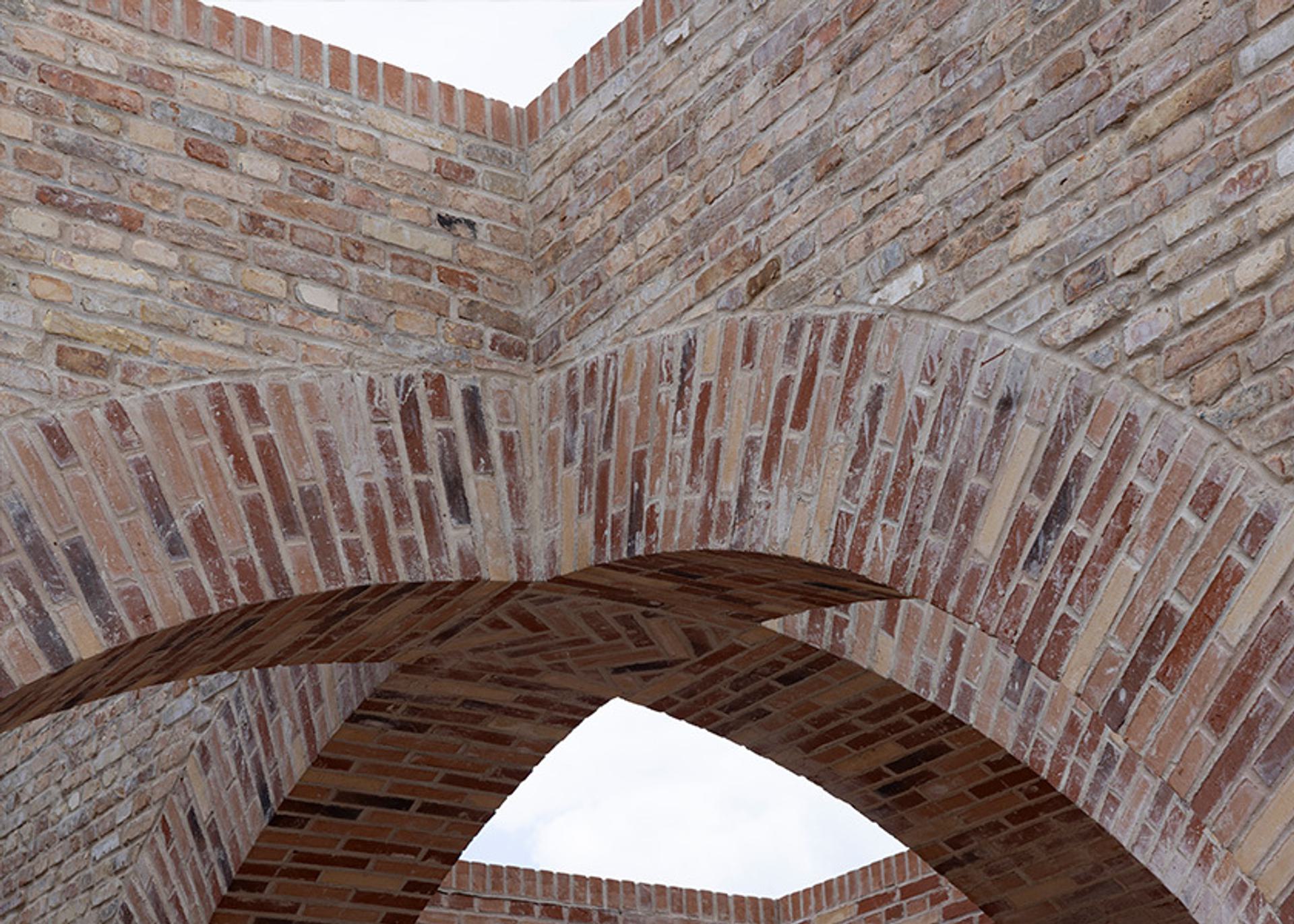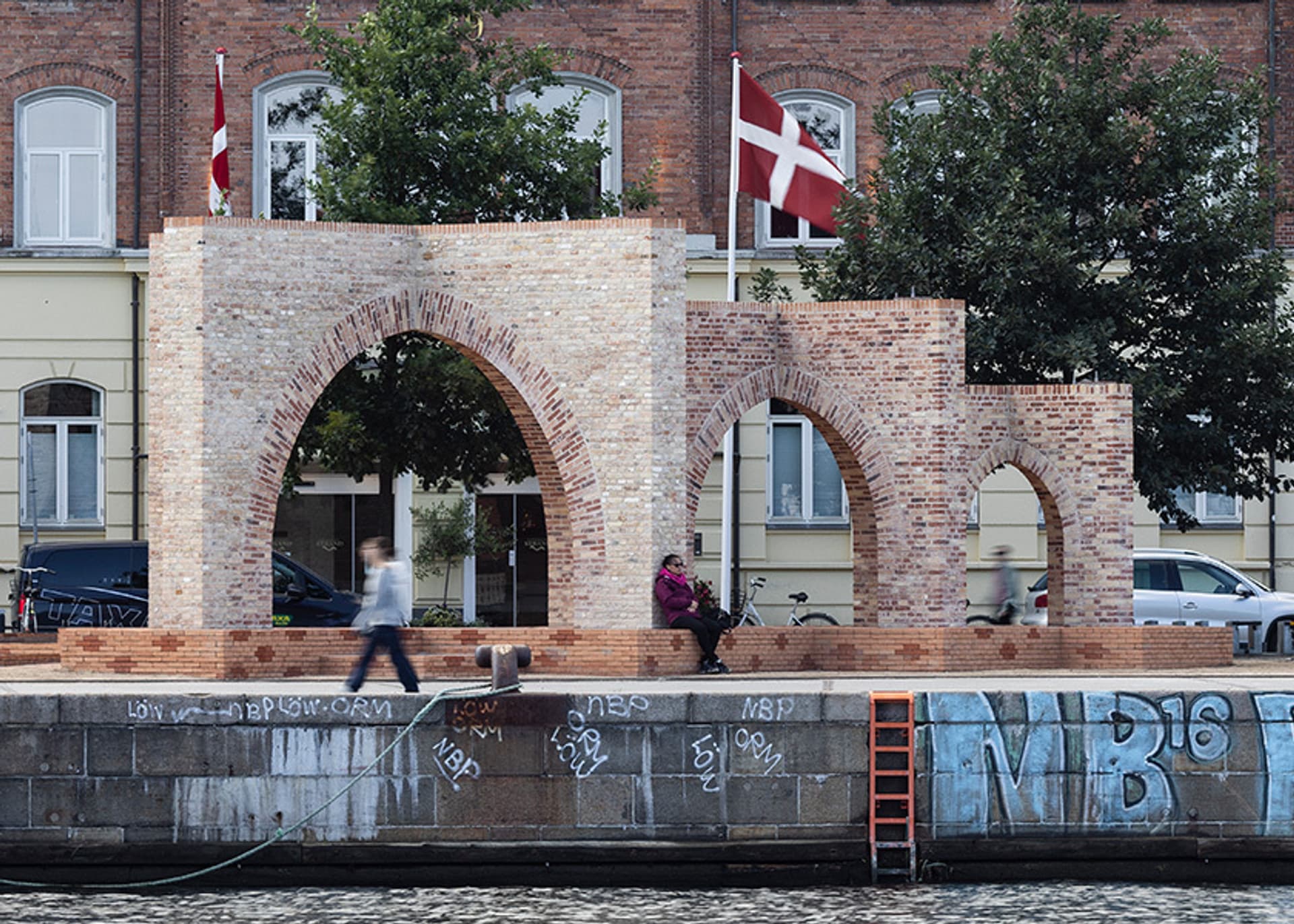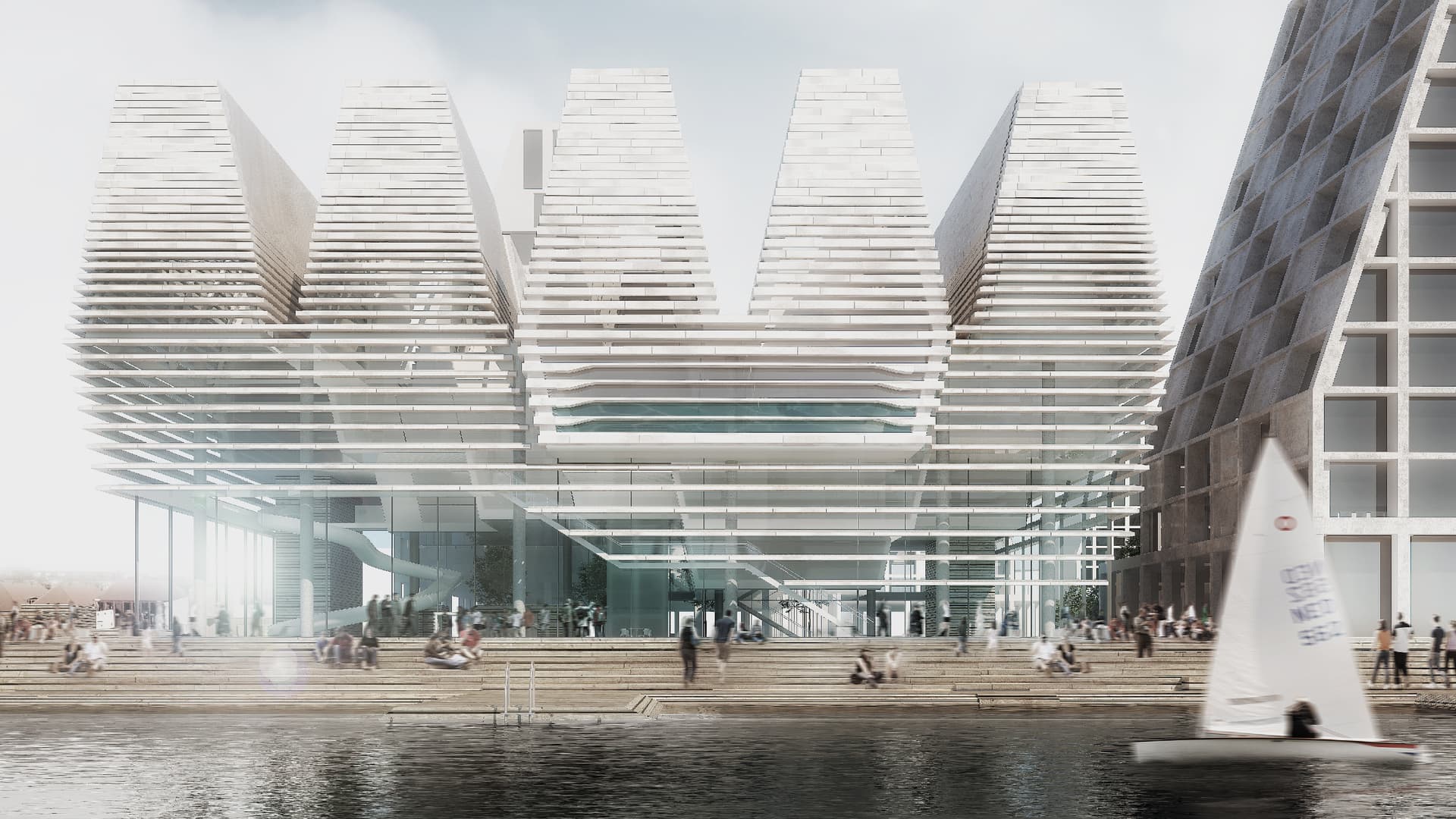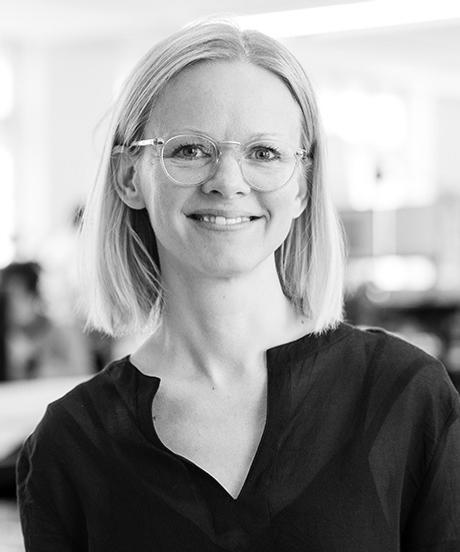
Bricks in Common
A pavilion addressing the basics of welfare architecture, as well as the paradoxes
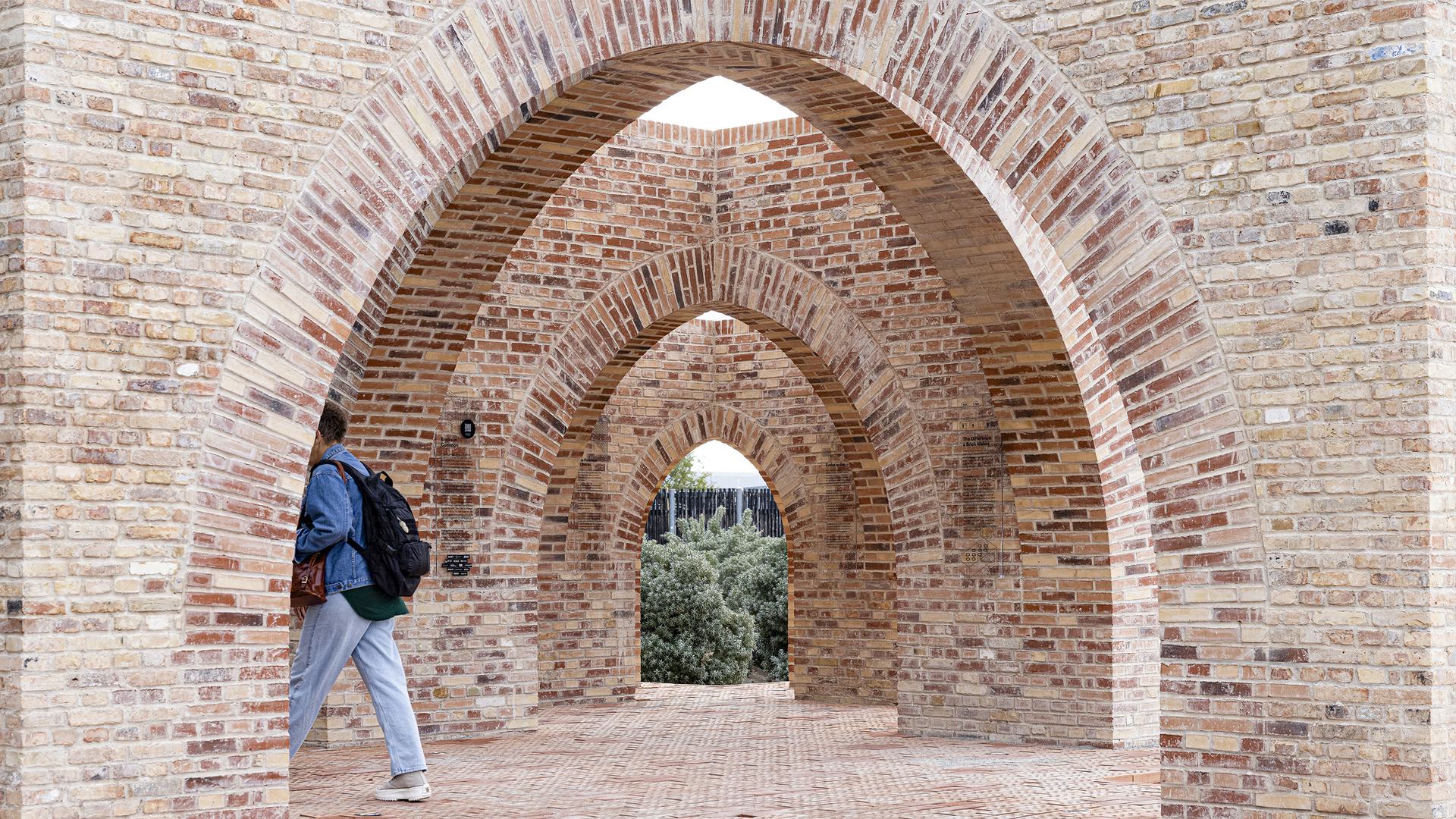
We have bricks in common
Brick is the cornerstone of the Danish welfare construction, and we celebrate this in the World Architecture Year 2023. The year 2023 also commemorates the 400th anniversary of the Copenhagen Masonry's Guild as well as the new CO2 requirements being incorporated into the building regulations. However, the two coinciding events mark a major dilemma.
With a lifespan far longer than 50 years, brick is a proven long-lasting material and one of the few materials that gets more beautiful over the years. However, brick is also an energy-intensive material that requires large amounts of energy in the production phase. If we want to bring brick into a more sustainable future, this will require innovation, development and – not to mention – design for disassembly.
Concretized through the brick pavilion “Bricks in Common”, we focus on the issue and explore what it will take to promote a more sustainable development in the brick and construction industry.
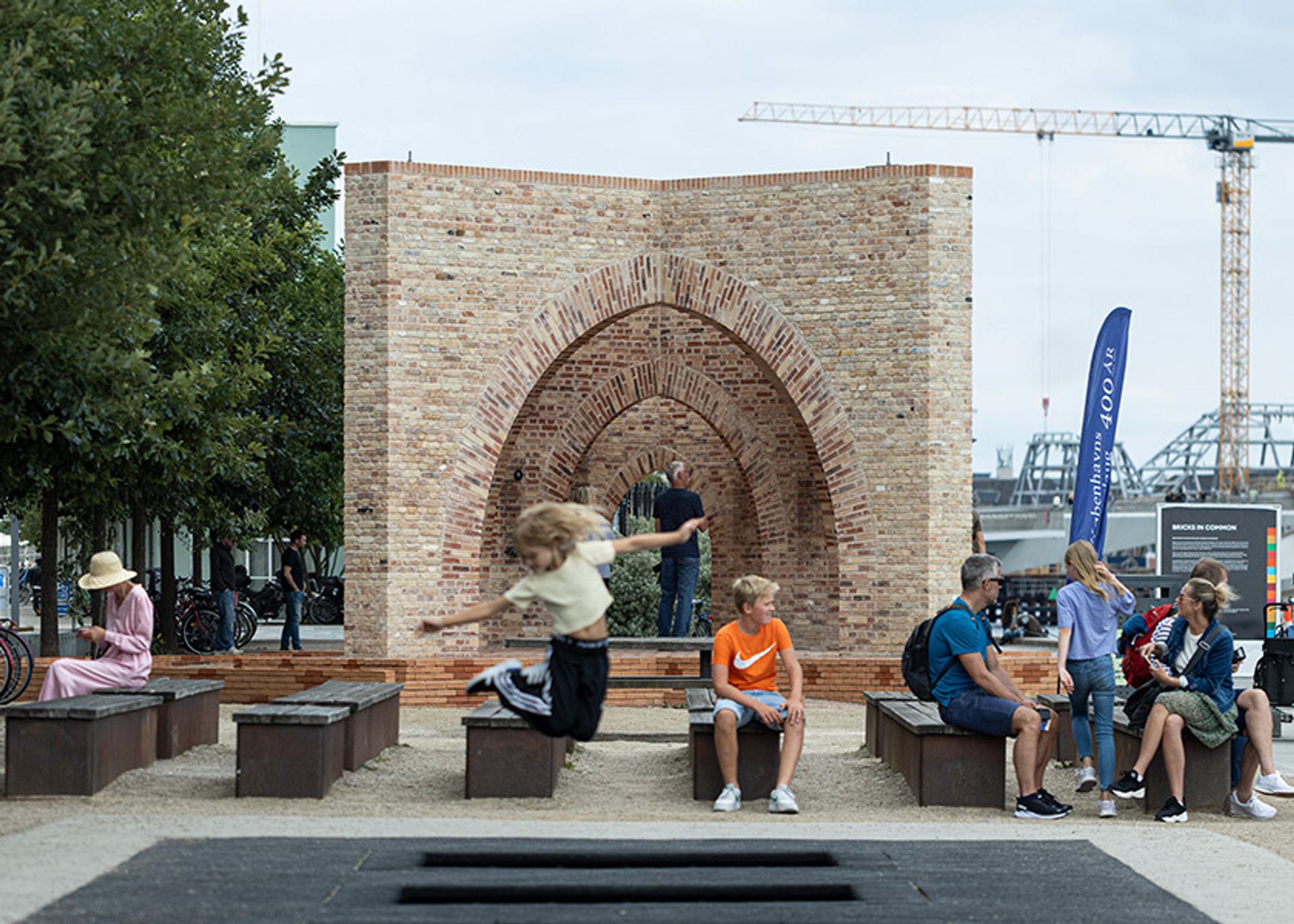
Brick has great historical, cultural and aesthetic value in the Danish construction tradition, but is it also a relevant material in a future driven by responsible material consumption? These are the questions and themes our “Bricks in Common” pavilion is looking to focus on and get closer to answering. With it, we want to create a shared, welcoming space where we address the challenges of the future through strong partnerships, more sustainable solutions and generous architecture.Nanna Flintholm / Partner and architect at AART
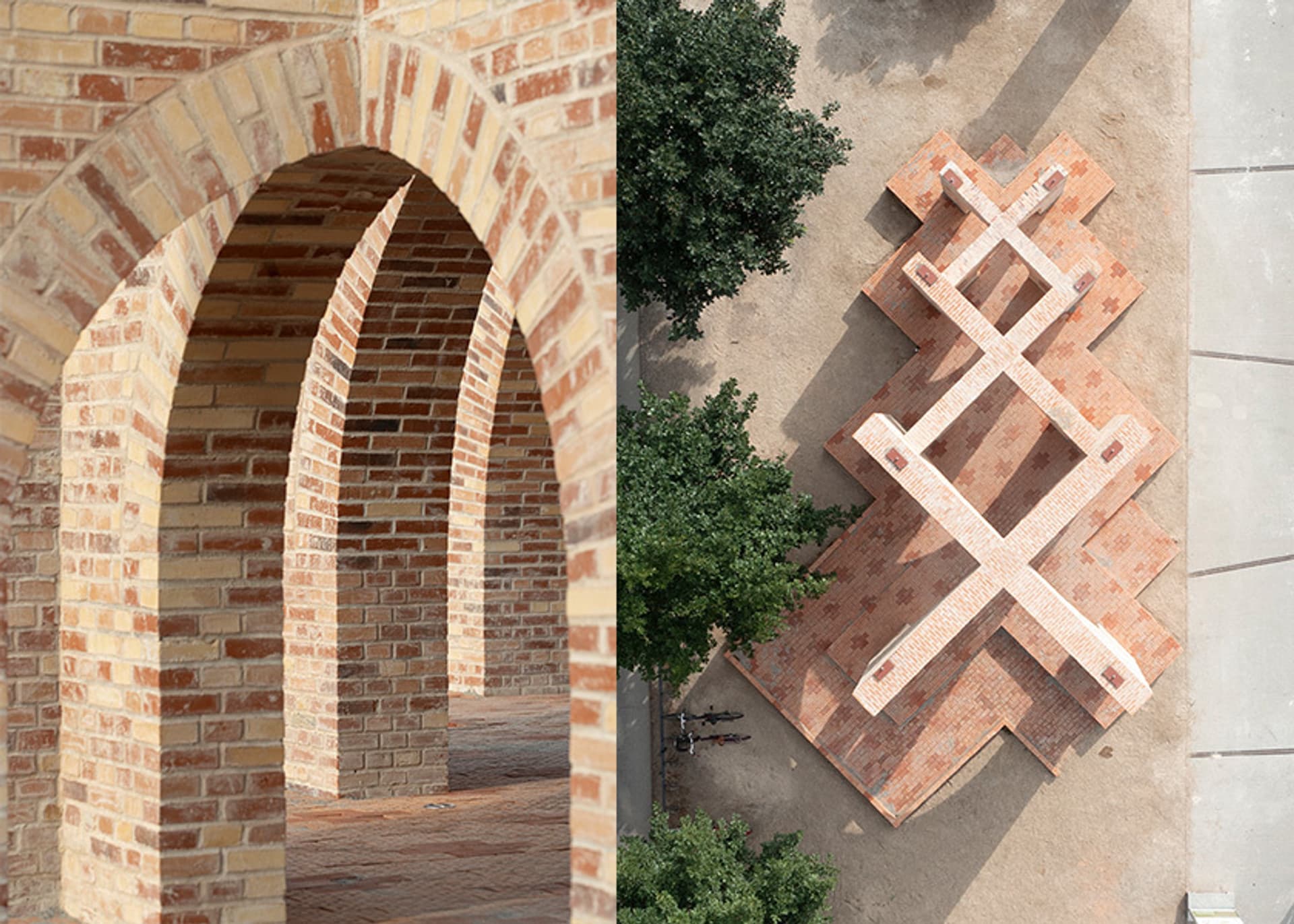
The history of brick told with sensory architecture
Bricks in Common places particular focus on the brick’s cultural and historical references; yet at the same time, the structure also communicates its narrative through form alone.
Inside the pavilion, the visitor will have a sensory experience of brick, which will remind the visitor – first hand – of brick’s many qualities and possibilities.
Moreover, the pavilion is a social and physical landmark in the city, and its unique design language piques the interest of those passing by. Both those who experience the pavilion up close and those who pass by at a distance.

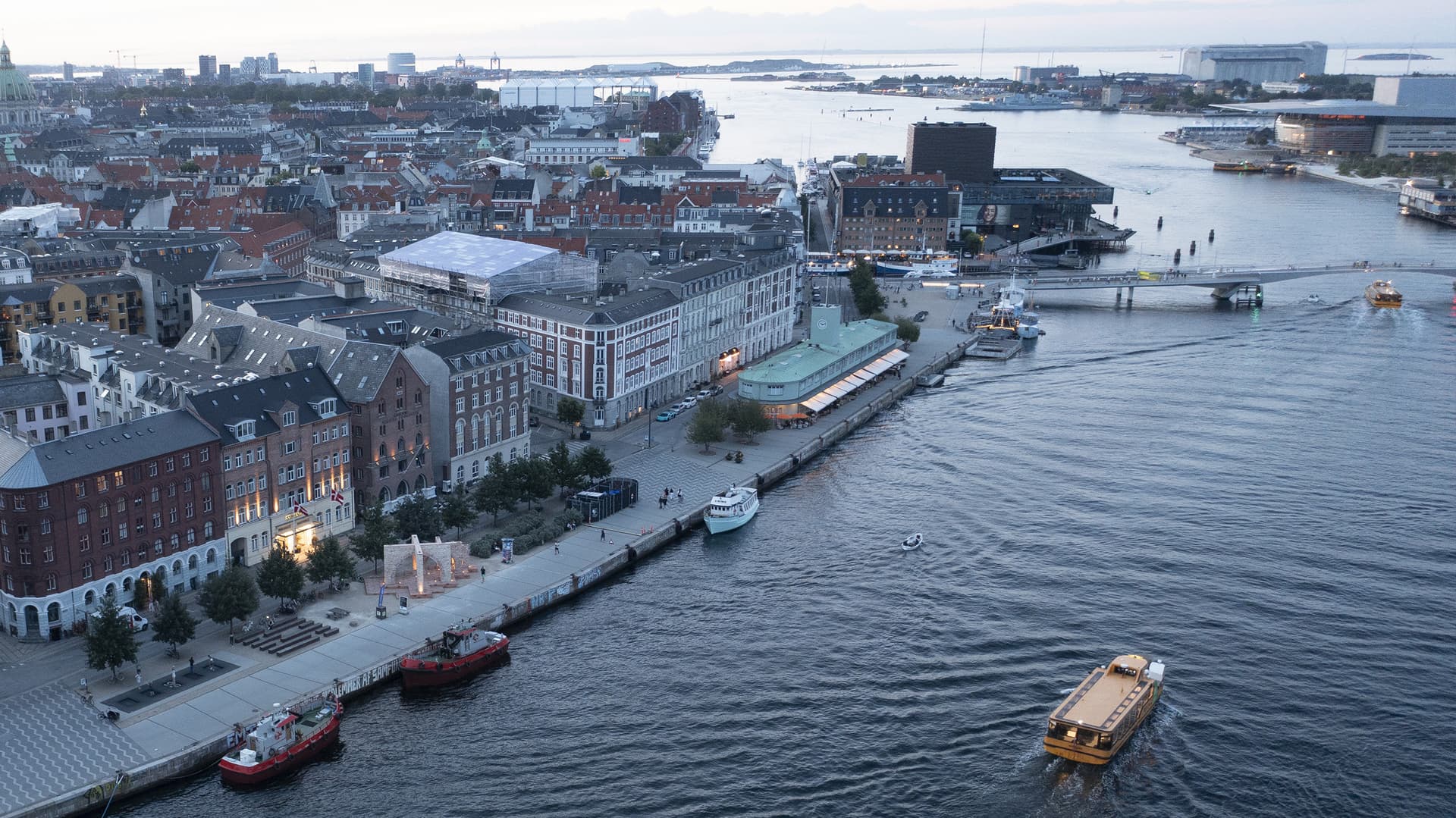
Tradition. Transformation. Ambition.
The pavilion takes the form of three pairs of intersecting arches of different sizes – but each with roughly the same carbon footprint: Approx. one tonne CO2eq.
The smallest arch is made of a traditional, solid and resource-intensive brick while the medium arch reflects the discourse around transition, using the latest and most climate-friendly machine-moulded brick on the market.
The middle arch has 50% less carbon emissions compared with the smaller arch, and thus shows how it is in fact already possible to achieve reductions.
The largest arch marks an ambition to achieve reductions of 75% compared with the smallest arch – the same reduction which the construction sector should achieve by 2030.
All of the arches include a certain proportion of recycled brick which increases as the arches get bigger in size, with the largest featuring 70% recycled brick.

Brick is not just brick, and when it comes to carbon emissions there is a huge difference between the many options on the market, even today. In order to attain the necessary reductions from brick as a building material in the future, we need to go beyond setting carbon emission requirements for new builds and also establish requirements for how materials are handled and reused.Nanna Flintholm / Partner and architect at AART
A circular collaboration
The team behind “Bricks in Common” is a partnership representing all parts of the construction value chain – from manufacturers to consultants and craftsmen. Egernsund Wienerberger and Gamle Mursten produce and deliver the bricks, Murerlauget and mason apprentices from NEXT KBH build the pavilion, while consultants AART, NOAA and OJ Rådgivende Ingeniører design the buildings and together we create the impact.
All materials are selected with design for disassembly in mind. The suppliers will take back the materials and reuse them in future projects.
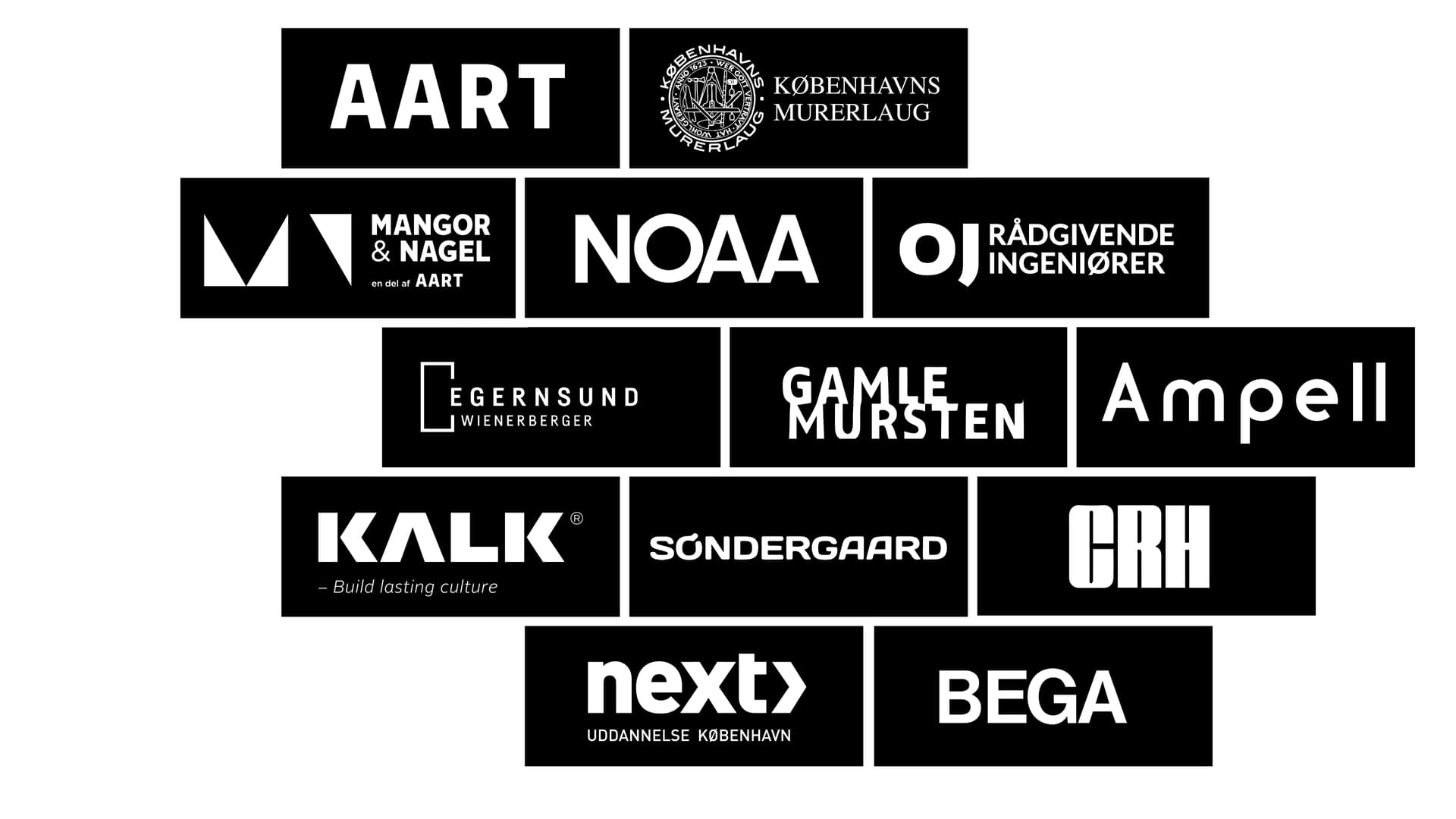
Bricks in Common is one of the SDG pavilions along the harbour canal and other central locations in Copenhagen, launched by the Danish Association of Architects and the UIA World Congress of Architects 2023 in collaboration with the City of Copenhagen and By & Havn. The SDG pavilions will serve as Danish architectural signatures for the World Congress in Copenhagen from 2-6 July 2023 and will be the setting for activities throughout the summer in connection with the congress and Capital of Architecture 2023.
Want to know more?

